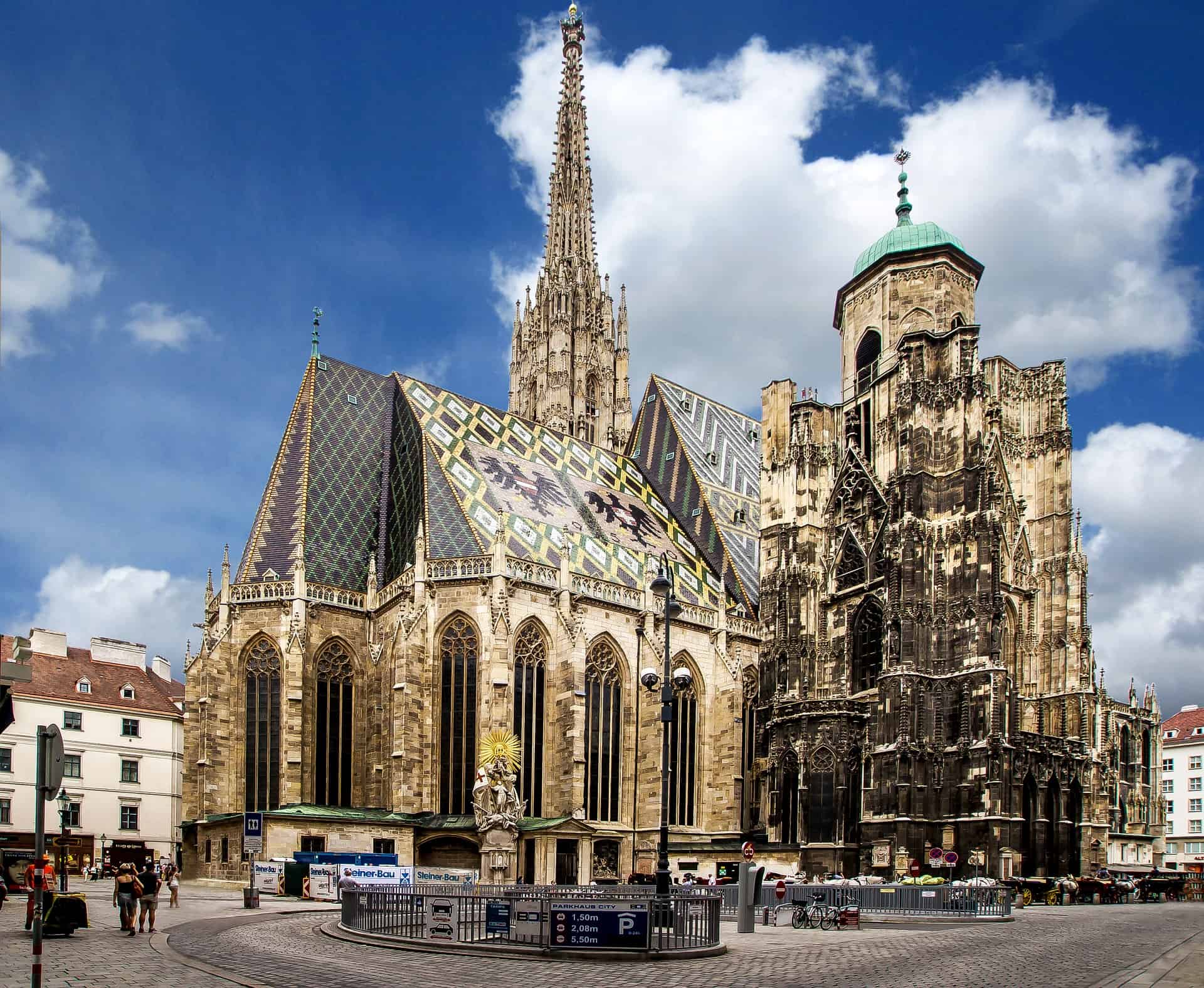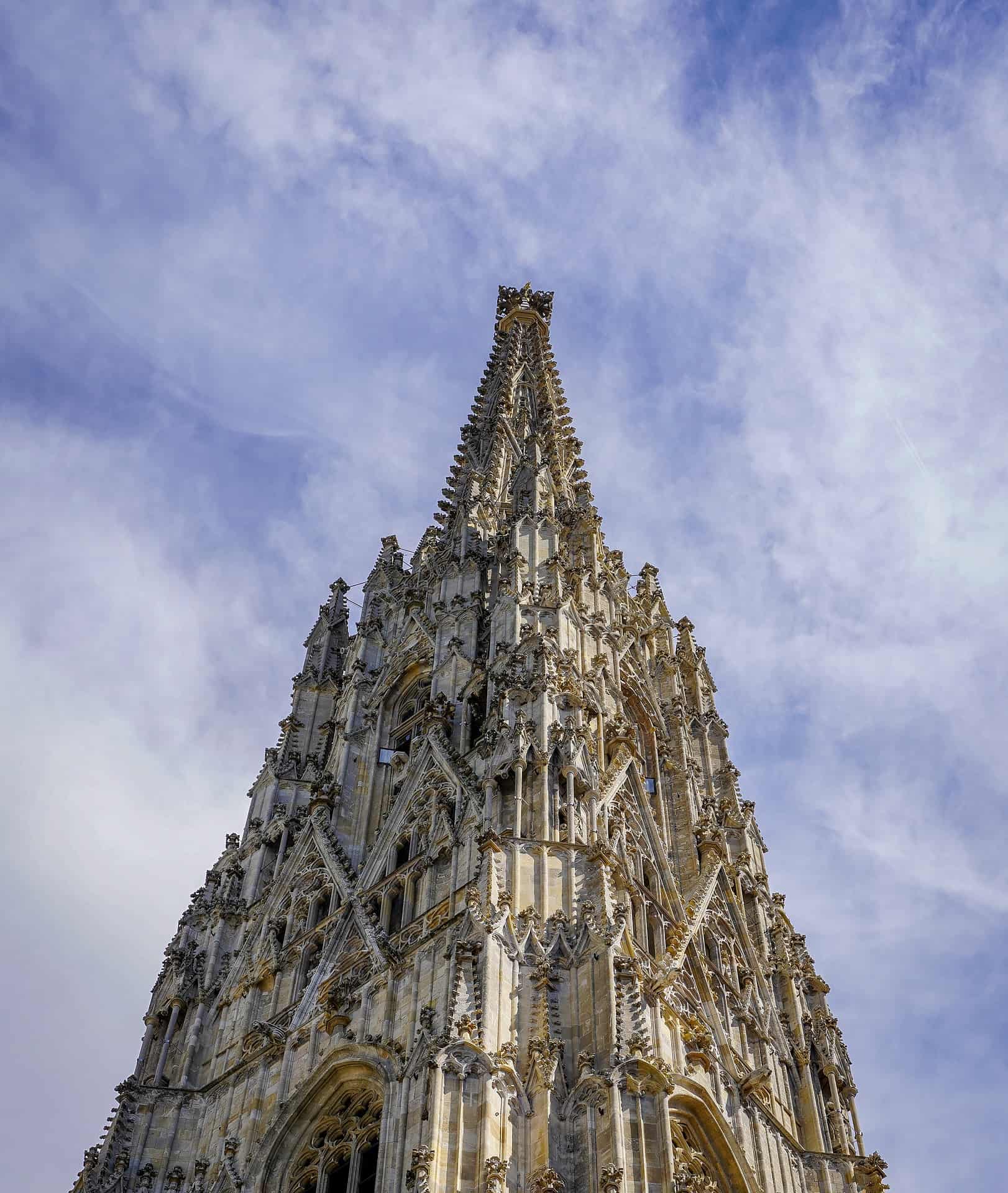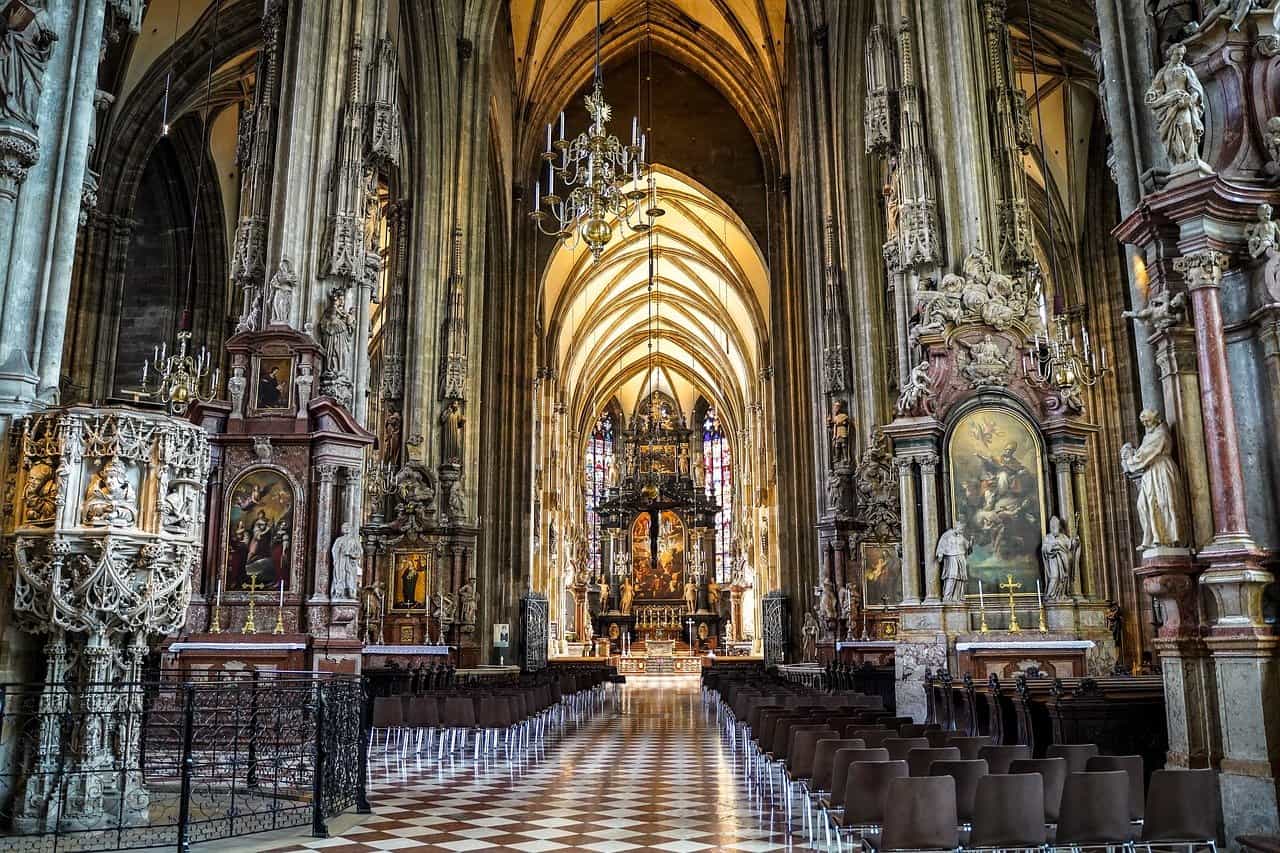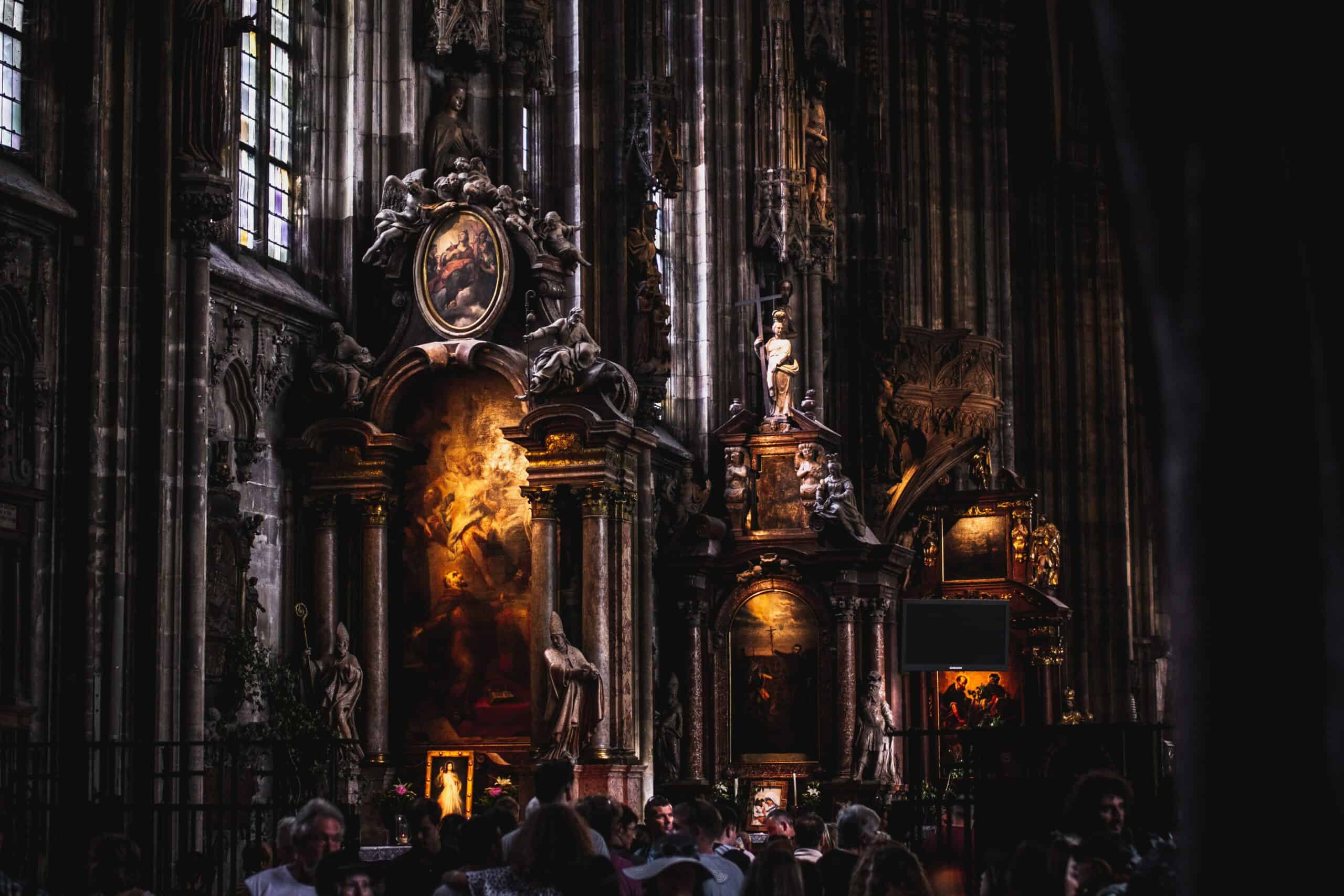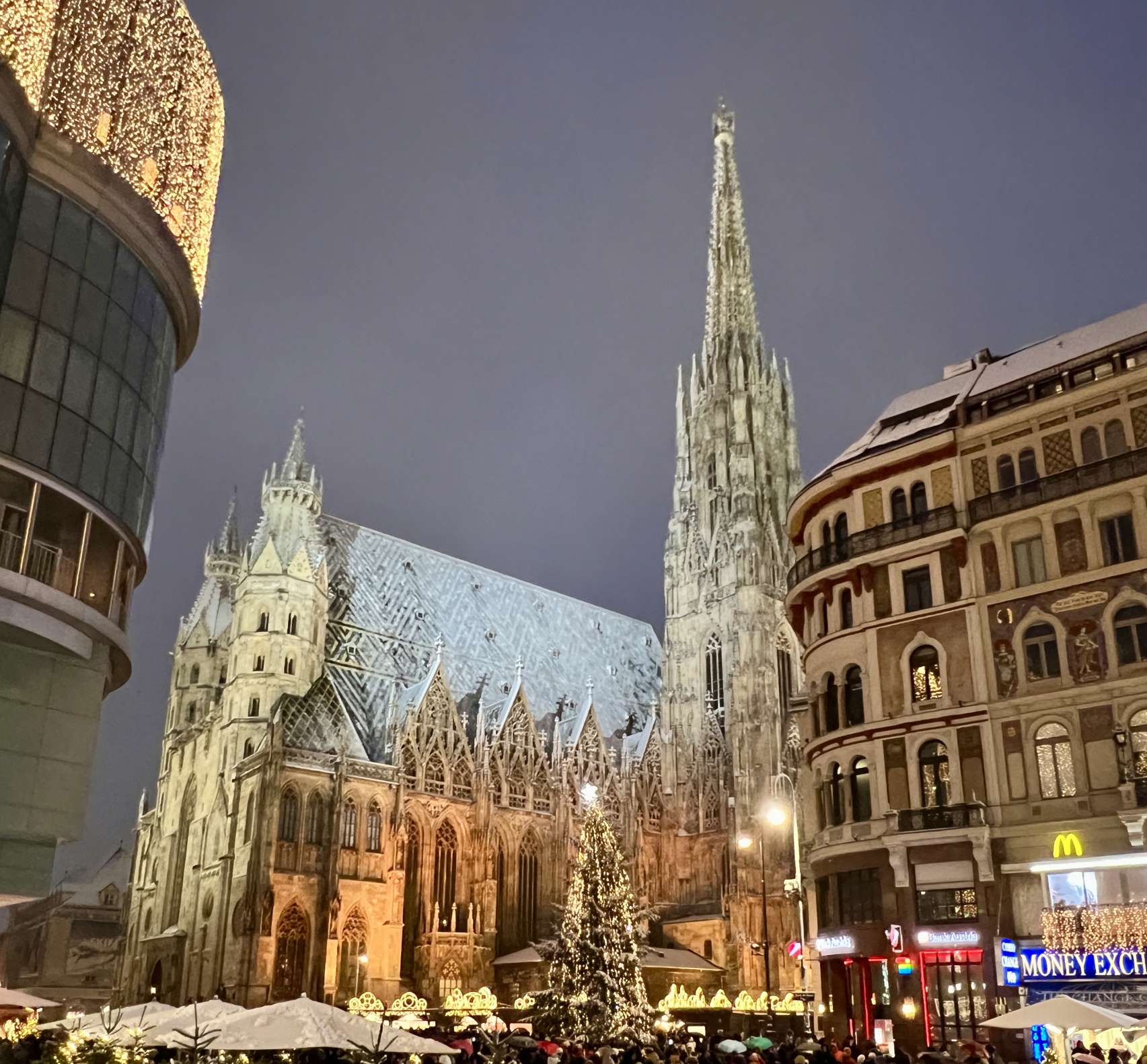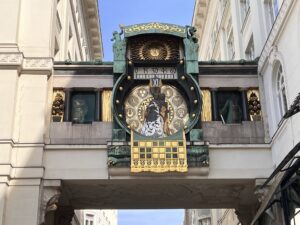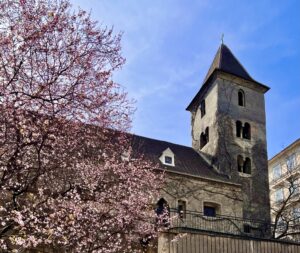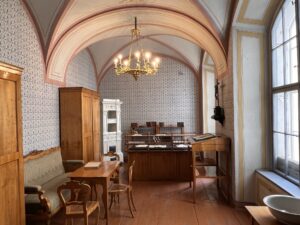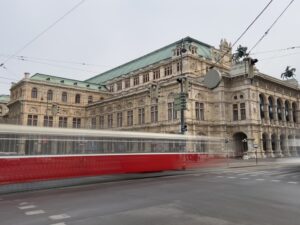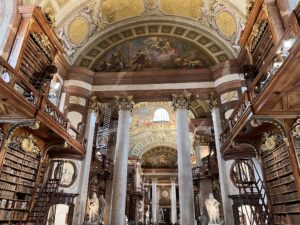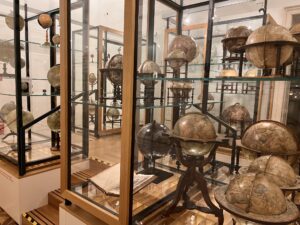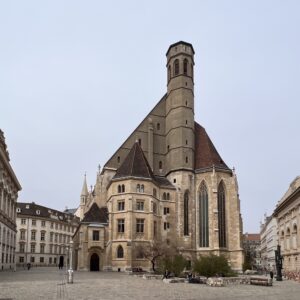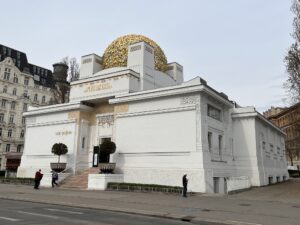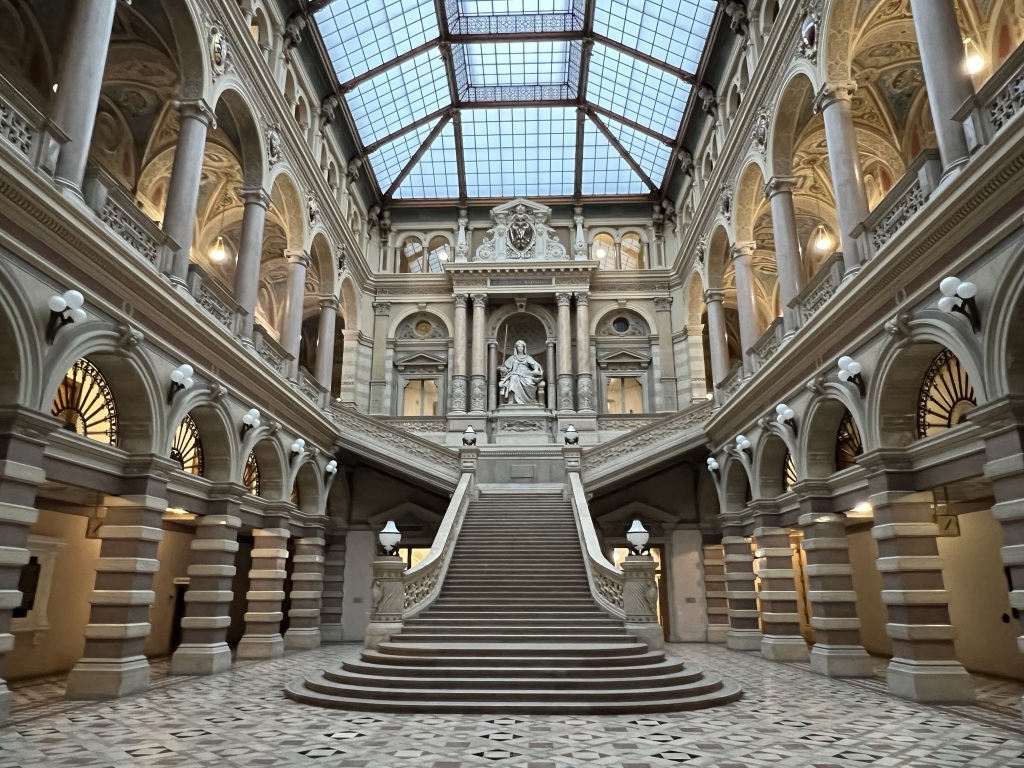Discover the fascinating history of St. Stephen’s Cathedral – Vienna’s most important landmark
The St Stephen's Cathedral, also called “Steffl” by the Viennese, is probably the most important landmark in Austria. The origins of the cathedral date back to the year 1137. St. Stephen's Cathedral is located in the center of the 1st district and thus the city center of Vienna.
St. Stephen's Cathedral is 107.2 meters long and 34.2 meters wide. It has four towers. The highest is the south tower at 136.44 meters. 343 steps lead to the tower keeper's room, from which you have a gigantic view of Vienna. A total of 13 bells hang here. The most famous bell in St. Stephen's Cathedral, the Pummerin, is in the 68.3 meter high north tower. It is the second largest free-swinging church bell in Europe and is heard on Austrian television every New Year's Eve to usher in the new year. The imperial and royal double-headed eagle and the coats of arms of the city of Vienna and Austria were laid out on the roof of St. Stephen's Cathedral using colorful roof tiles. The interior of St. Stephen's Cathedral was repeatedly changed over the centuries up until the Baroque period.
St. Stephen’s Cathedral: Relics, Celebrities & Treasures
In addition to numerous valuable altars and side chapels, the impressive cathedral treasury can also be viewed: artistic relics decorated with gold and precious stones, monstrances, liturgical texts and books as well as vestments. Numerous celebrities also found their final resting place in St. Stephen's Cathedral: Emperor Frederick III was buried in an impressive marble sarcophagus. The cover plate of the tomb alone weighs eight tons. Prince Eugene of Savoy found his final resting place in his own chapel. And in the catacombs of St. Stephen's Cathedral, among others, the Habsburg Duke Rudolph IV "the Founder" is buried, who laid the foundation stone for the new Gothic building of the cathedral in 1359. The catacombs also contain the graves of the Viennese cardinals and archbishops.
Very popular is the tour down into the so-called catacombs of St. Stephen's Cathedral. Under the cathedral there is a large complex of around 30 burial chambers, which have been called "catacombs" since the 19th century. Access is via a staircase in the left aisle and via the Crucifix Chapel.

